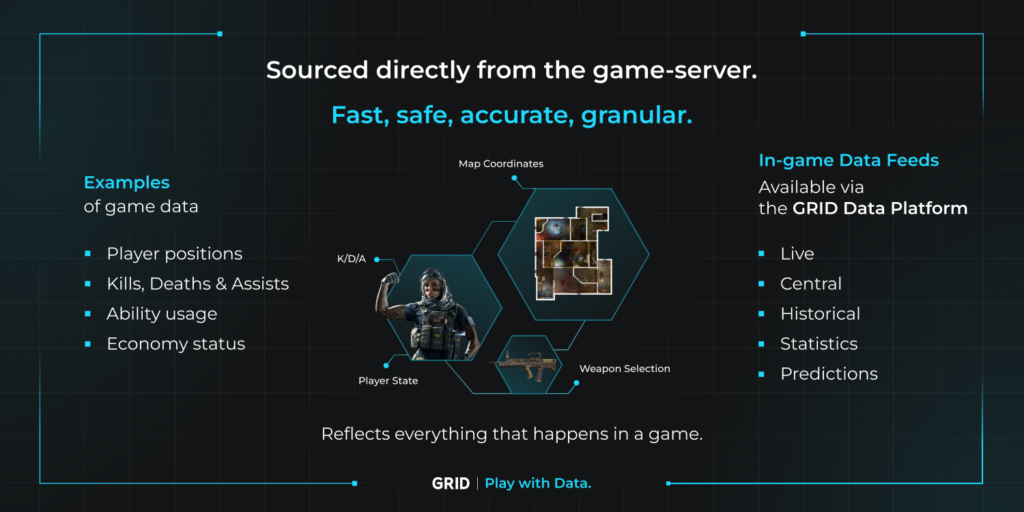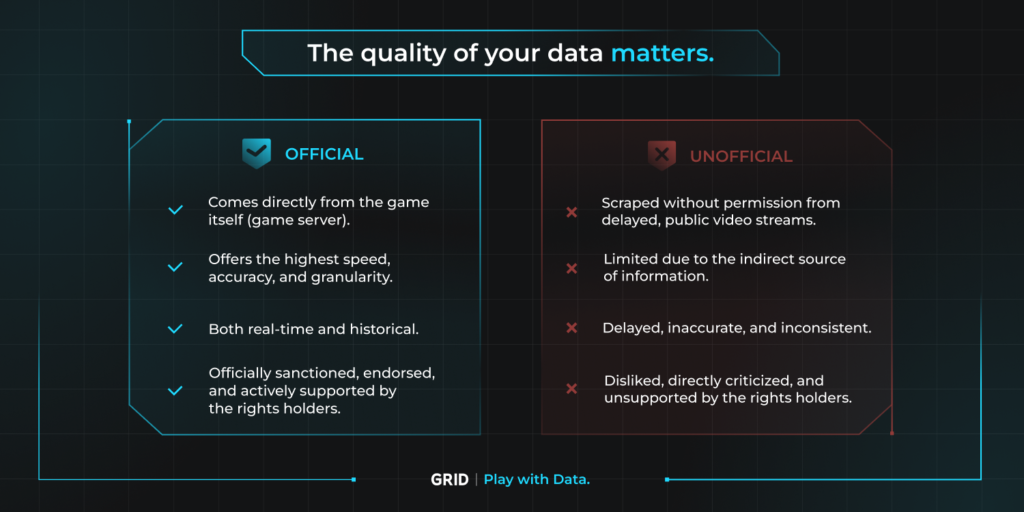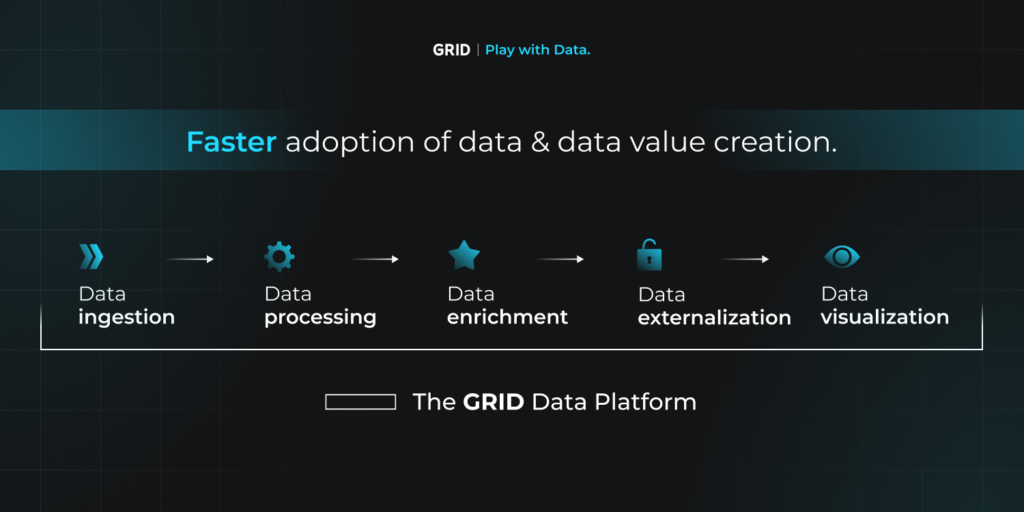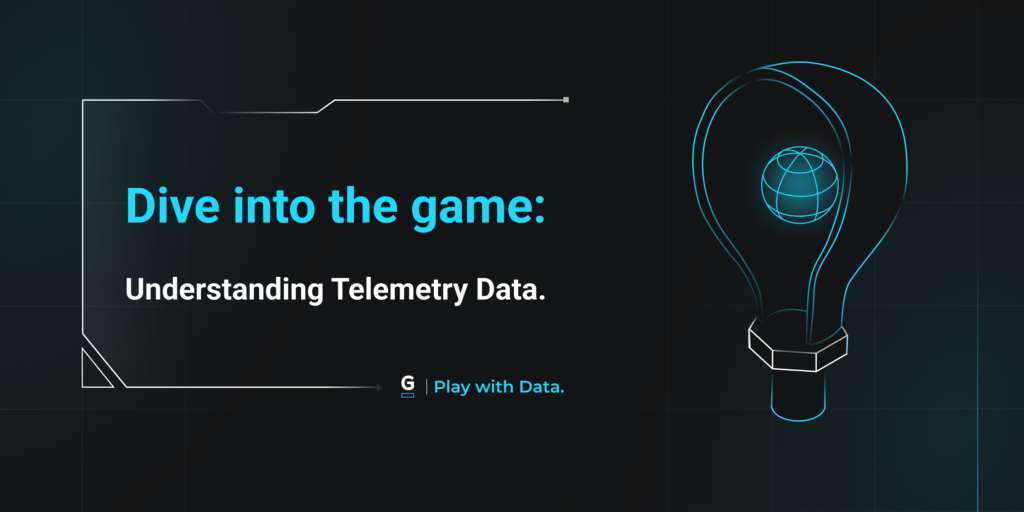If you are in esports or gaming you have probably heard about game data, in-game data live data, or telemetry data. But what does it actually mean?
Where does all this hype come from? Why do game publishers like Riot Games or Ubisoft believe in its strategic value?
This article is your ultimate guide to understanding how in-game telemetry data is revolutionizing the esports industry. From tracking every move players make to analyzing strategies in real-time, telemetry data is the secret ingredient behind your favorite esports tournaments.
Whether you’re a gamer looking to up your game, a developer aiming to refine your title, or just curious about the nuts and bolts of competitive gaming, you’re in the right place. Dive in as we explore the power of telemetry data in esports and how it’s shaping the future of gaming.
If you want to learn more about in-game data, follow us on LinkedIn to make sure you don’t miss the next episode of our series.
What is in-game telemetry data in esports
Telemetry data is your game’s heartbeat. But let’s start with the basics – the definition. The full name of this type of asset class, which we’re using at GRID is “in-game telemetry data,” also known as in-game data.
In-game telemetry data in esports refers to the collection, analysis, and utilization of data generated by players’ interactions within a video game during competitive play.
This data encompasses a wide array of metrics, including but not limited to player movements, in-game decisions, timing of specific actions, usage of game resources (like ammunition, abilities, or items), positioning on the game map, and much more.
So why we’d not use live data as an alternative name? Keep reading to find out.

Capturing the Pulse of Esports: Data Feeds
The essence of esports lies in its fluidity and the constant flux of competitive dynamics. Every click, every move, tells a story, unfolding in real-time, offering a granular view of the battlefield.
This granularity and speed of data in the digital sphere allow for a level of analysis and insight that has never been seen before in traditional sports. The in-game telemetry data can be turned into various data feeds.
To give you a better understanding of what it means, we’ll use as an example the data feeds available on the GRID Data Platform:
Live – A set of APIs that expose live, in-game data, that updates as the actions occur. The data format is generic across all titles. Data is available with zero delay, in sync with the official stream or at a set delay. Live data is updated and available live as a game is ongoing, as well as historically, after the match has concluded.
Central – A set of APIs making key static data available. This data is deemed static as, although being kept up to date, it is not expected to be changing constantly. This type of data is central to all of GRID’s other products and services, as it links together entities (such as Series, Teams, Tournaments, etc.) and their unique identifiers (IDs).
Historical – This is a fairly broad category but at GRID, historical data is essentially the recording of the GRID Live Data Feed offering so that it can be used in the future. As a result, GRID Historical data only becomes available after the Live Data Feed for a title or data point is up and running.
Statistic – A set of APIs that externalizes data points calculated by aggregating and combining data collected across many live matches.
Predictions – A set of APIs that expose ML-based predictions of a certain outcome to occur. Each prediction has a type and a probability, the type being e.g., win and a probability being a number indicating the likelihood of the event occurring.
Video – A set of APIs that allow the consumption of video streams from tournaments directly by the clients.
Millions of data points – one source of truth.
Unlike in traditional sports, in esports there’s actually one source of truth for any game — the game server. The game server is owned by the rights holders making this type of data a part of the game intellectual property.
The existence of a game server makes telemetry data coming directly from there superior to any data coming from unofficial sources. Unofficial sources refer to data scraping, frequently from publicly available streams, or manual data collection.

The key to unlocking the potential of telemetry data.
It’s good that we’ve covered the basics but how do we actually tap into the potential of this specific data? Due to its digital nature, in-game telemetry data in esports has to be sourced with a specialized technology.
There’s no other way to get live, complete, and secure data feed other than by plugging directly into the game server. And for that you need a partnership with a game server’s owner — the rights holder in the form of a game publisher or esports tournament organizer.
A direct integration with the game server enables low-latency, granular processing of dozens of thousands of data points at once and ensures safe distribution and the most accurate data feeds.
This is exactly what’s been keeping us going at GRID. We’ve dedicated the last five years to build a platform specifically designed to cater to the unique nature of this data. It’s scalable, fast, available for both the rights holders and the data consumers, and most importantly — it’s title-agnostic.
To learn more about the specific technologies necessary to cater to the unique nature of in-game telemetry data, check out GRID Engineering Blog (pro tip — start with the article from GRID’s CTO, Chris King, The Game Title Agnostic Vision: A GRID Origin Story.)

Conclusion: The future of competitive gaming is data-driven.
There are a few developers who’ve already realized the potential of game data such as the GRID partners – Riot Games, Ubisoft, or KRAFTON. But at GRID we believe that there’s a space to enable data-powered innovation in other competitive titles — from the learning publishers but also from the emerging studios, or indie developers.
Grassroots esports, or maybe VR experiences, new ways of empowering the community or engaging fans? In-game telemetry data is the key to enabling unbounded innovation in the ecosystem.
At GRID we’re proud to be at the forefront of in-game data innovation providing solutions for data sourcing (GRID Game SDK), analytics, integrity, and distribution in competitive game titles. GRID is the official data platform for League of Legends, VALORANT, Rainbow Six Siege, PUBG, CS2, and Dota2. If you are looking for a in-game telemetry data infrastructure for your existing or upcoming competitive title or are interested in getting access to official data for your products contact [email protected].

